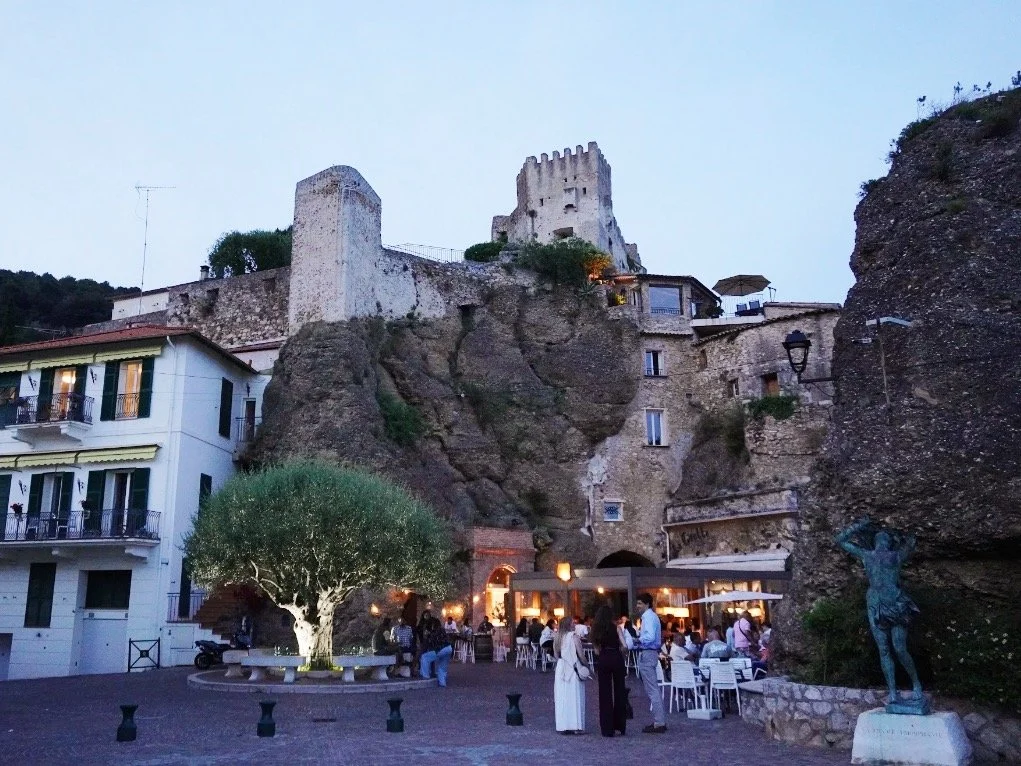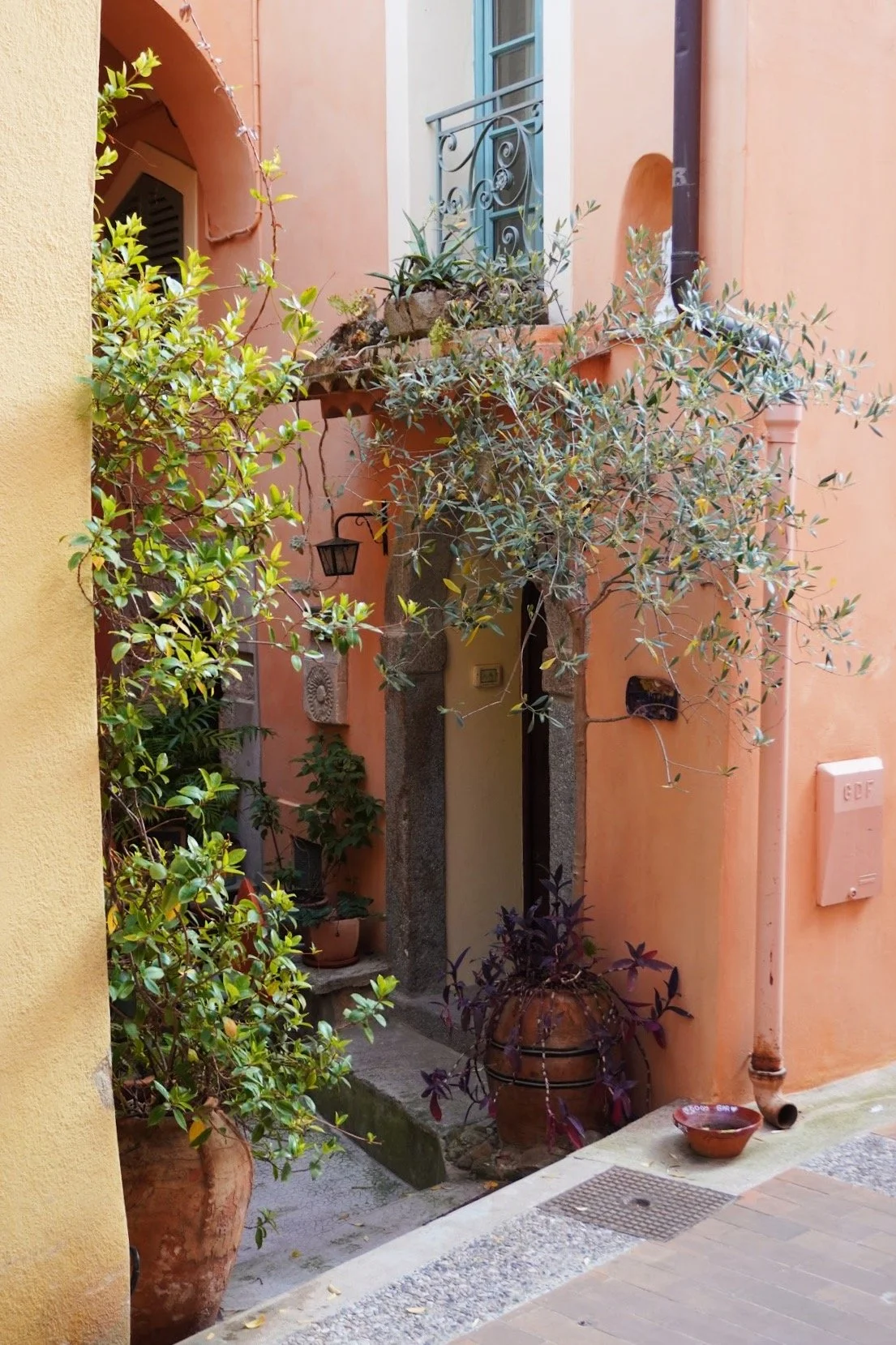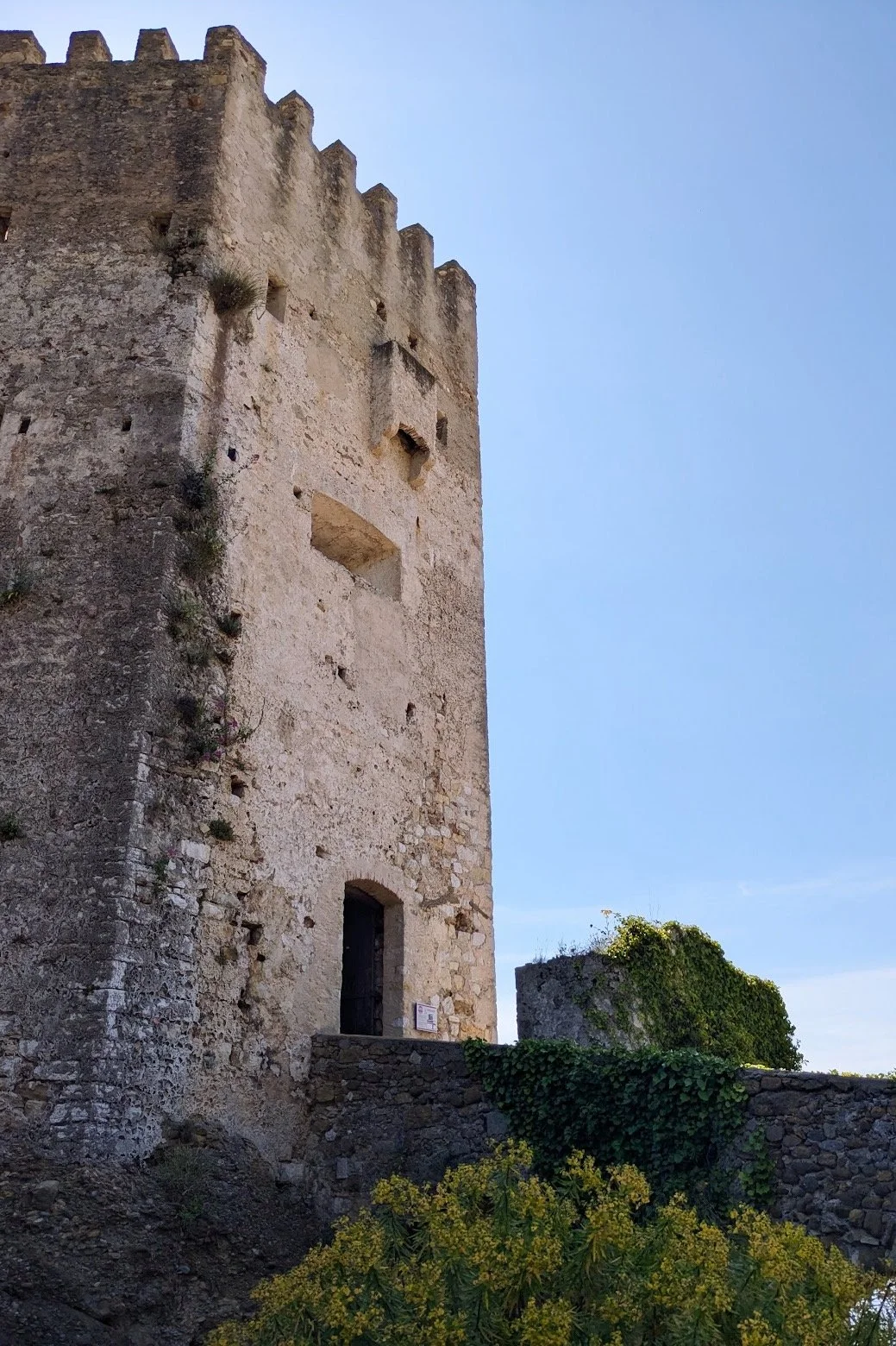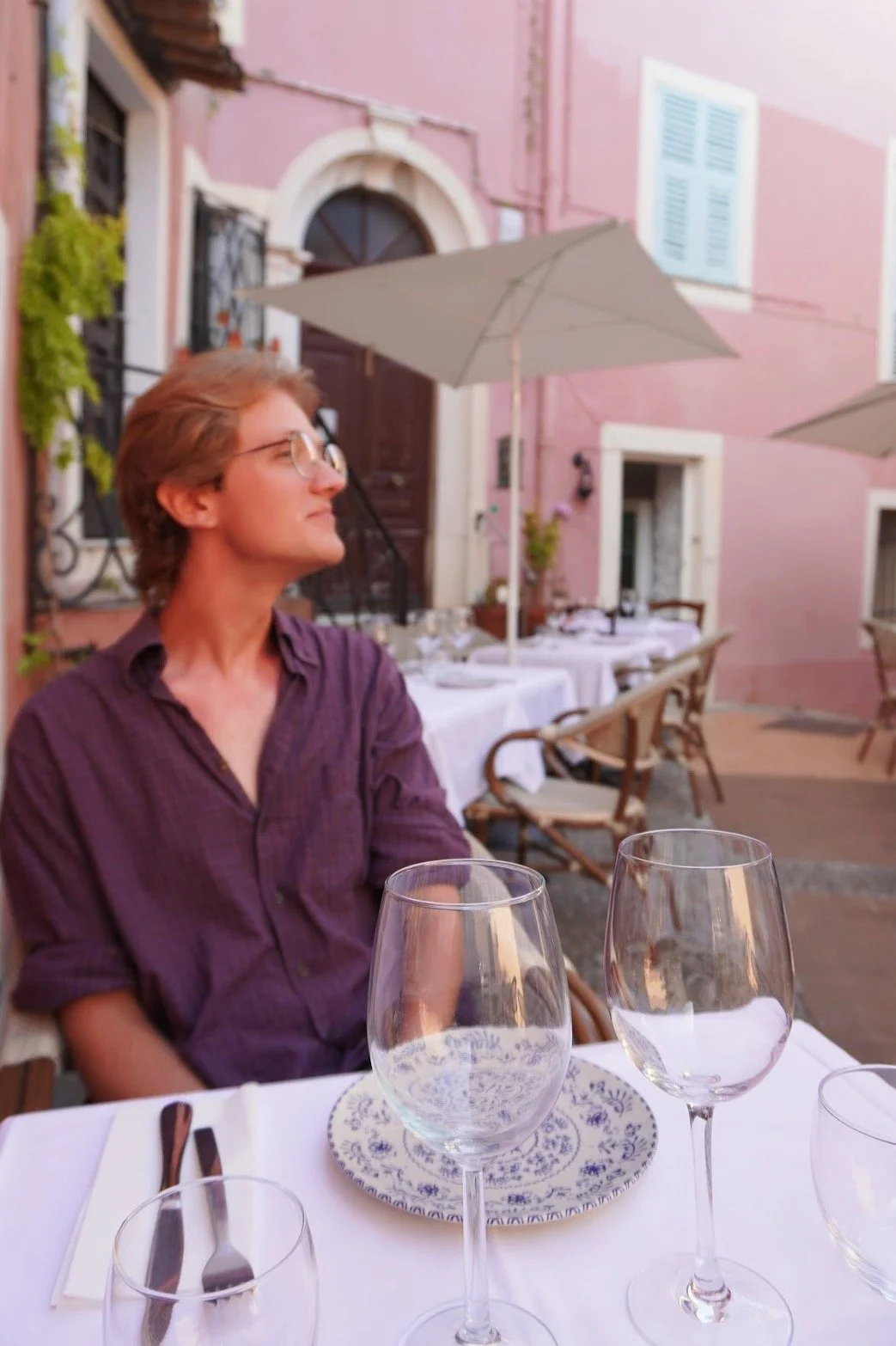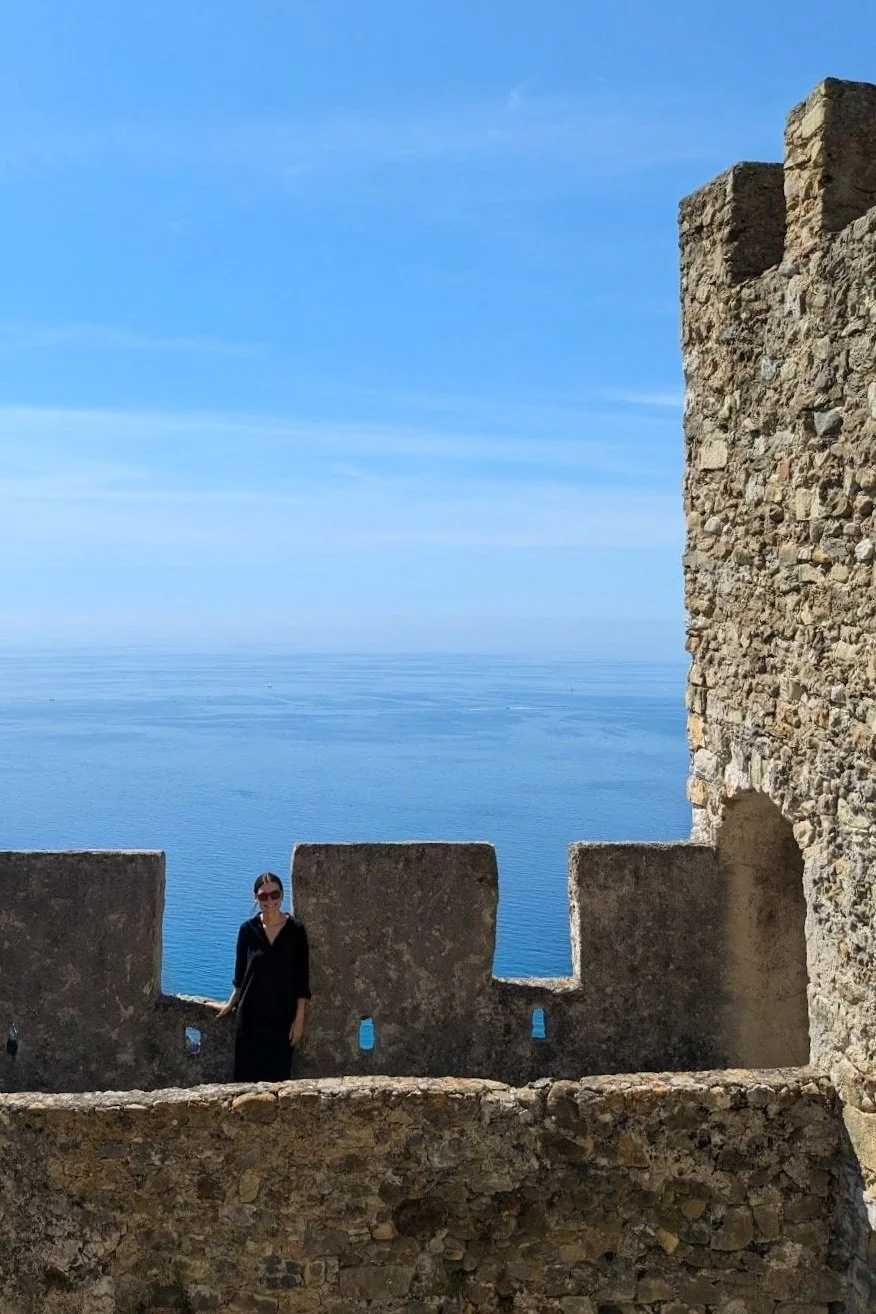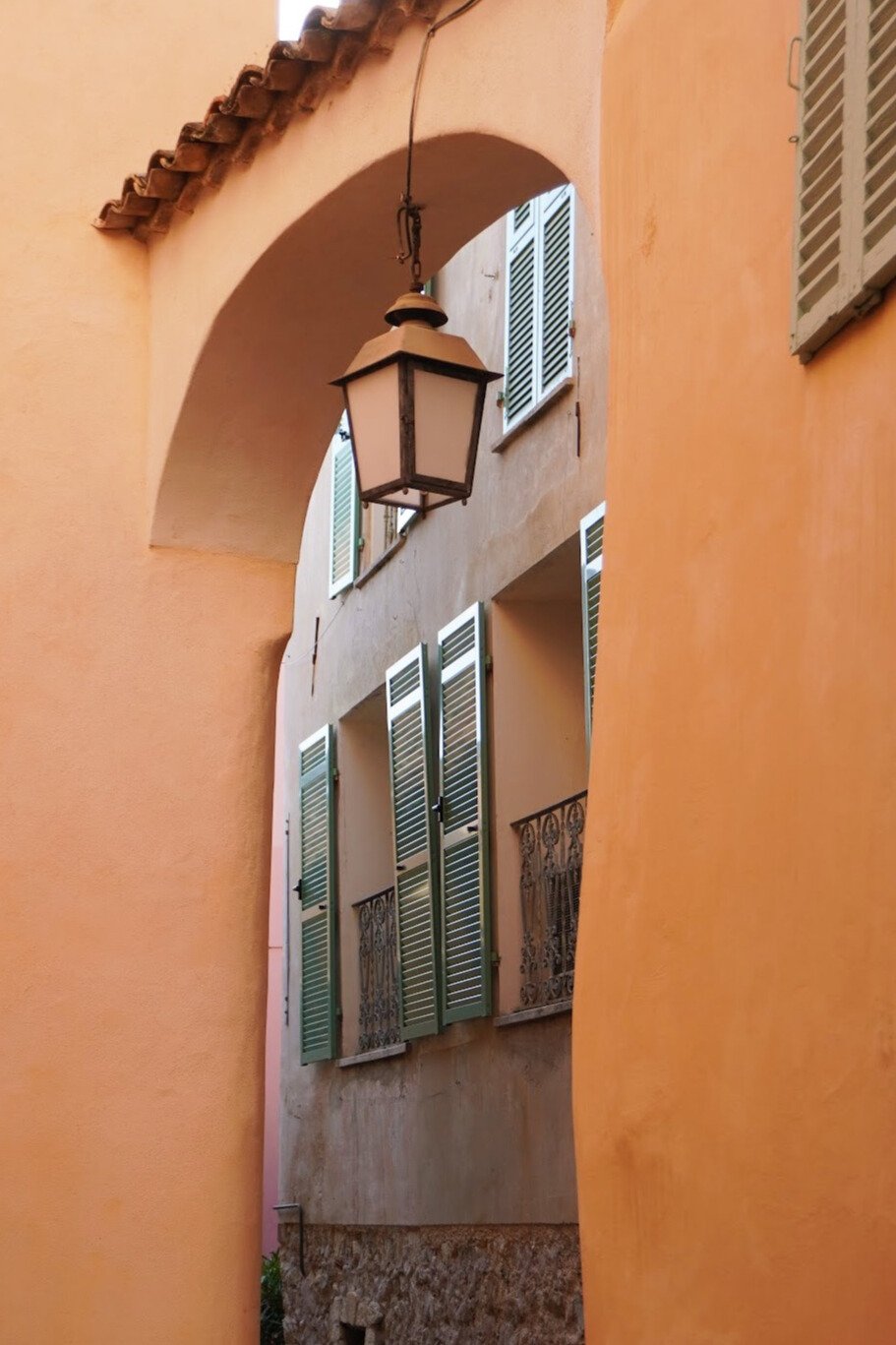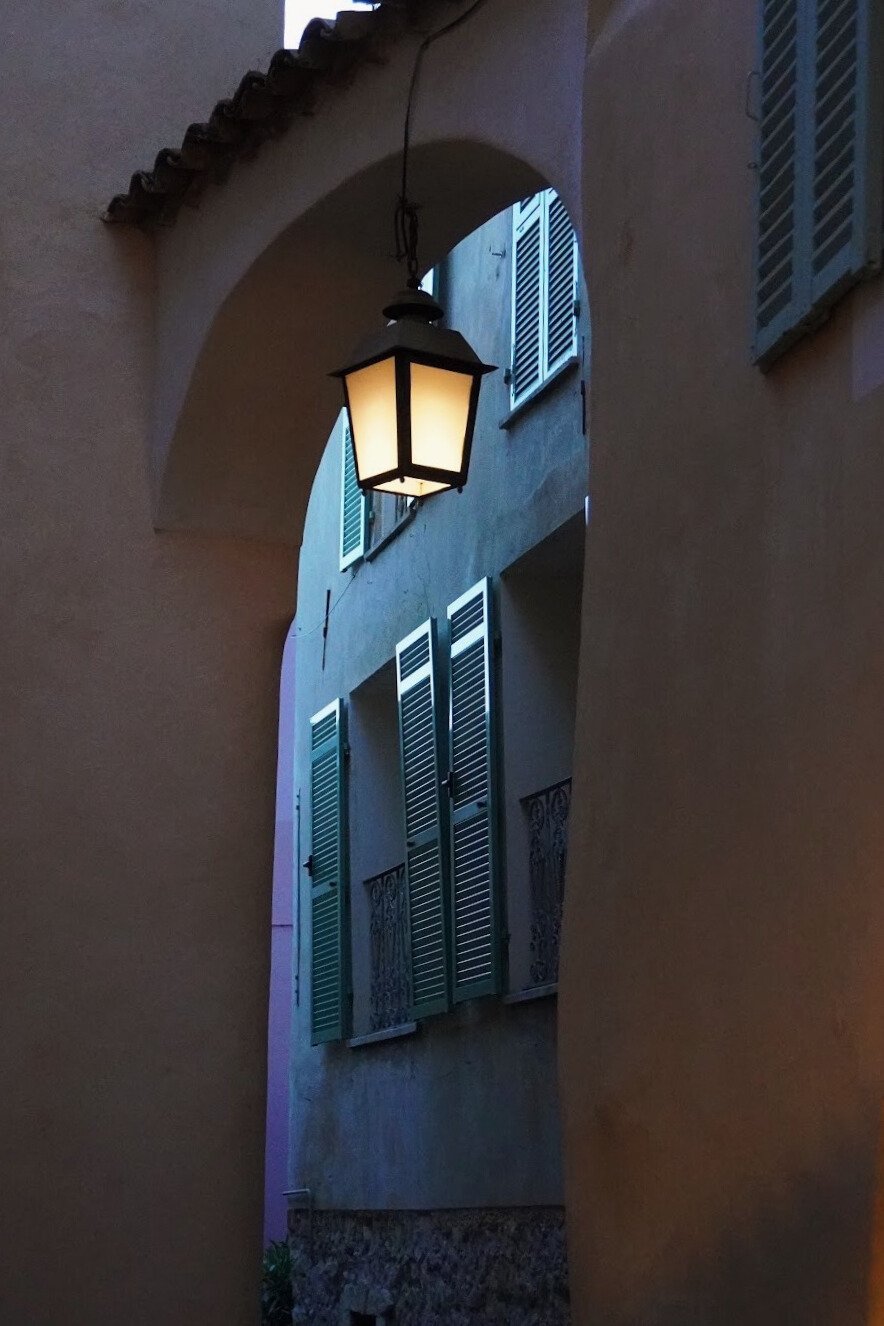Roquebrune-Cap-Martin: The Most Charming Village on the Riviera
“A good traveler has no fixed plans, and is not intent on arriving.”
– Lao Tzu
Perched on a mountain high above the Mediterranean Sea and almost equal distance between Monaco and Menton, you’ll find a village seemingly untouched by time. Roquebrune-Cap-Martin’s medieval village is a fascinating destination on the Riviera with a mixture of stone alleyways, sweeping sea views, and a 1,000-year-old castle — a true hidden gem on the French Riviera.
For most, the name Roquebrune-Cap-Martin may conjure images of luxurious coastal villas and sun-drenched beaches, but for me, it’s the old hilltop village that’s truly memorable. Any fellow history and photography lover will likely feel the same. Similar to other hilltop villages of the Riviera, like the famous village of Eze, there is plenty to do in Roquebrune’s medieval town. You can visit artist studios, ateliers, and shops, eat at charming restaurants, hike up to the fortress, and enjoy the most dazzling ocean views and city views (Monaco and Menton)!
Where Is Roquebrune-Cap-Martin?
Roquebrune-Cap-Martin is located between Monaco and Menton, an ideal spot along the Riviera. The medieval village itself is set inland, perched dramatically on a cliffside 200 meters above the sea, offering postcard-worthy views of the coastline.
How to get to Roquebrune-Cap-Martin’s Medieval Village
By train: From many stations along the coast, including Nice and Menton, you can take the TER local train to “Roquebrune-Cap-Martin” station, then hike uphill or take a short bus or taxi to the village. Depending on the time of year, I might recommend different options. When I hiked up from the train station, it was June and very humid, and it was a steep hike with lots of stairs. So, if you’re visiting in the warmer months (May to October), I would recommend continuing on a bus line or getting a taxi or Uber! If you do take a bus the rest of the way, keep in mind that it will also be covered with the Lines d’Azur pass, which I explain more about in my Menton post. If you are visiting during the cooler months, then the hike from the train station is a lovely use of your time. You can stop and enjoy the views on the way up; there are even some benches along the path, and the hike is only 20-30 minutes.
By car: The village is about 30 minutes from Nice or 15 minutes from Menton by car. Limited parking is available near the village entrance, on the north-west side.
A Little About the Village
Roquebrune’s medieval village was founded around 970 AD by the Count of Ventimiglia as a defensive stronghold. Over the centuries, it passed through the hands of the Genoese, the Grimaldis of Monaco, and eventually France. The town’s labyrinthine alleyways, covered passages, and stone houses reflect the city’s medieval origins. Newer additions, like the Église Sainte Marguerite, also charm the streets, showcasing the village’s living history.
What to See in Roquebrune’s Medieval Village
Château de Roquebrune (Roquebrune Castle)
Standing proudly and prominently at the tip-top of the village, the Château de Roquebrune is one of the only Carolingian castles in France. Built in the 10th century, it was originally carved from stone and was later expanded by the Grimaldi family. The castle is open daily from 10:30 am to 6:30 pm and there is a small entrance fee. I would recommend arriving early to have more of space to yourself, as the castle is rather small. Inside the castle, you can appreciate better views of the ocean and the town, especially the old bell tower. There is also a small museum for those who wish to learn more about the history of the castle.
The “Millennial” Olive Tree
One can take about a seven-minute walk east from the castle to admire a 2,000-year-old olive tree! Amazingly, it still produces olives! The tree is twisted, massive, and deeply rooted in local lore; it’s one of the oldest olive trees in Europe and truly feels straight out of a fairytale.
Wander the Streets of the Village
Roquebrune isn’t about ticking boxes. Like many villages, it is an experience just to visit. The best part of a visit to Roquebrune-Cap-Martin’s village is getting lost and wandering the narrow and cobbled streets, admiring the pastel shutters, wrought-iron balconies, and climbing ivy.
Église Sainte-Marguerite (Saint Marguerite Church)
A quiet, unassuming gem, this church is beautiful from the inside-out, if you are able to visit when it is open. If you visit in the high season (May through October), the church is likely to be open any day of the week; however, in the off-season, the church will likely only be open on Sundays.
Artisan boutiques
While enjoying the cobbled streets, you can browse hand-crafted jewelry, sculptural masterpieces, local ceramics, Provençal textiles, and more. Not only do these make for great souvenirs, but it is always nice to support local artists.
Viewpoints
You can walk up to the castle or sit at Place des Deux Frères for views of the Mediterranean and Monaco. Place des Deux Frères even has nice benches to relax on and telescopes to peer out of (bring coins!). There is a cemetery on the high ground on the opposite side of the village. On the hike up to the cemetery, you will see sweeping ocean views. Once you arrive at the cemetery, you can enjoy a stunning view of Menton to the south-east.
Dinner at Casarella
Where to Eat in the Village
Despite its size, Roquebrune has multiple culinary gems worth visiting!
Casarella: A cozy, family-run spot with a partially covered terrace and traditional Italian cuisine. You can find vegetarian items, and make sure you order the bruschetta. (open for lunch and dinner)
Au Grand Inquisiteur: A fine-dining restaurant in a unique setting: a medieval vaulted room inside an ivy-covered building. (only open for dinner)
When to Visit
Spring (February–May): Flowers blooming, mild weather, fewer tourists.
Fall (September–November): Warm days, quieter streets, beautiful light for photography.
Summer is beautiful, but it will be hot and likely more crowded — aim for early mornings or evenings. Save your afternoons (the hottest part of the day) for the beach.
Chateau de Roquebrune
Suggested Itinerary
Morning
Arrive in the village
Visit the castle and the olive tree
Wander the old streets
Stop for photos at the viewpoints
Afternoon
Explore shops, as they will likely be open by the afternoon
Take a dip in the water at a nearby beach (there is one just 10 minutes walking from the train stop)
Travel Tips
Footwear: Wear sturdy shoes — the paths are steep and cobbled.
Sun protection: I know this one should be obvious by now, but sunscreen up before heading out for the day. Bring water, sunglasses, and a hat (especially in warmer months).
Respect the village: Even though it looks right out of a fairytale, people still inhabit this village — please keep noise down and don’t enter private areas.
Nearby Attractions
Spend the afternoon at the beach: I enjoy the beach that is just a few minutes from the train stop (Plage du Golfe Bleu), but you could also take the train to a different beach along the Riviera.
Monaco (10 minutes): Prince’s Palace, Monte Carlo Casino, and Jardins Saint-Martin.
Menton (15 minutes): Citrus gardens and Belle Époque architecture. Discover more by reading my blog post about Menton!
Roquebrune-Cap-Martin’s medieval village isn’t just a stop on the Riviera. A beautiful combination of its soaring castle, ancient olive tree, and narrow lanes whisper stories of the past and make it a place that lingers with you long after you leave.
So if you’re planning a Riviera trip and want a slice of history with your sea views and divine cuisine, don’t miss this magical hilltop village. This is a wonderful off-the-beaten-path choice to avoid the crowds of Eze!
Have you been to Roquebrune-Cap-Martin? Or perhaps you’re planning a visit? Leave your questions or experiences in the comments below — I’d love to hear from you!
Enjoyed this blog post? Save it on Pinterest!
Sibley is a firm believer that anyone can travel well, regardless of budget. She considers herself an off-the-beaten-path type of traveler, avoiding crowded areas and seasons, searching for hidden gems wherever she finds herself in the world.
